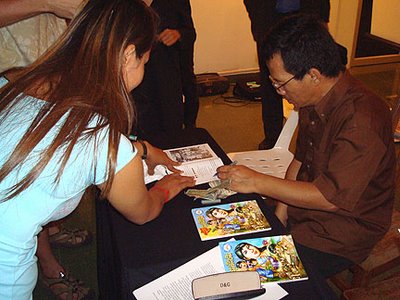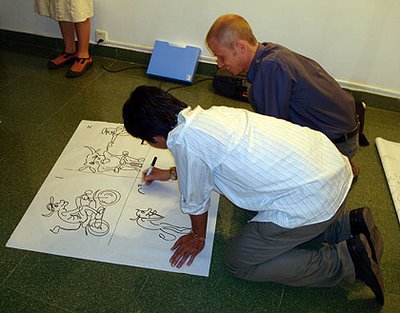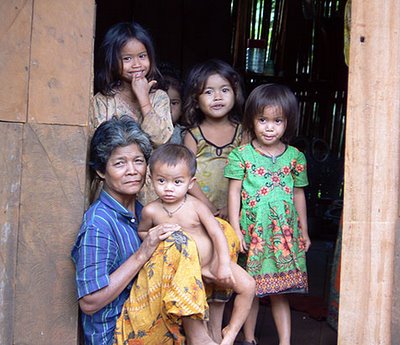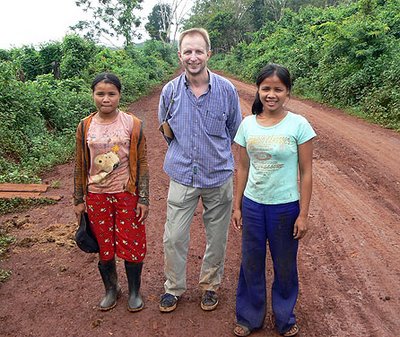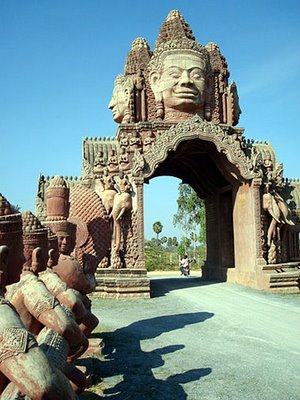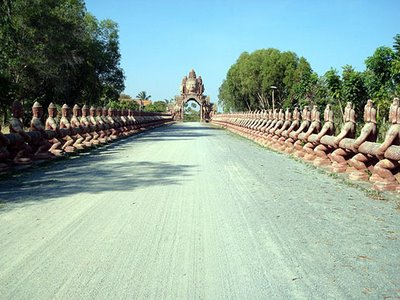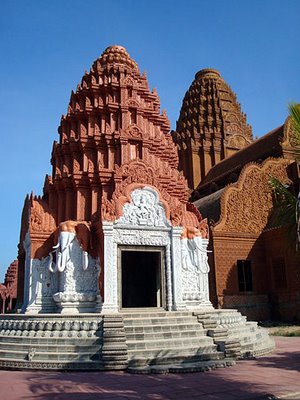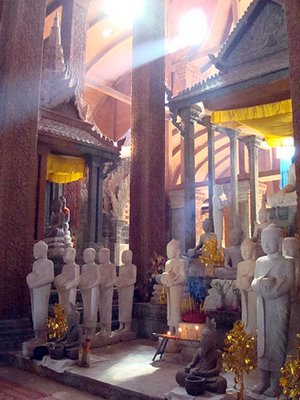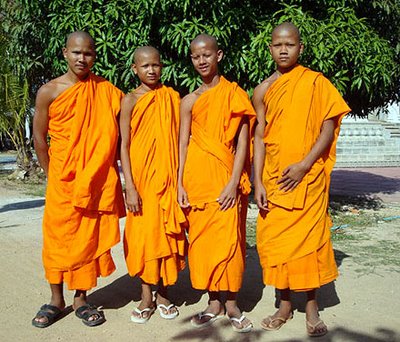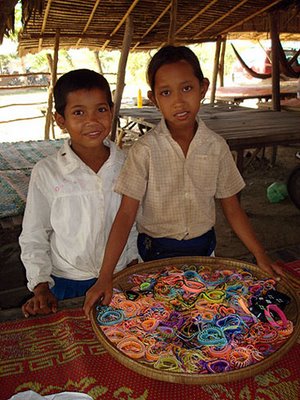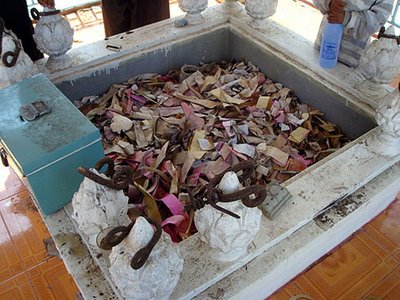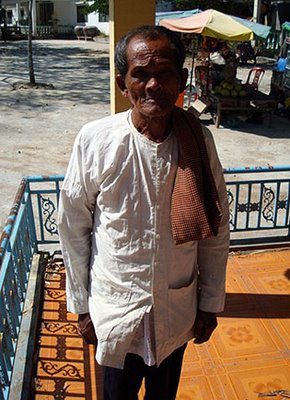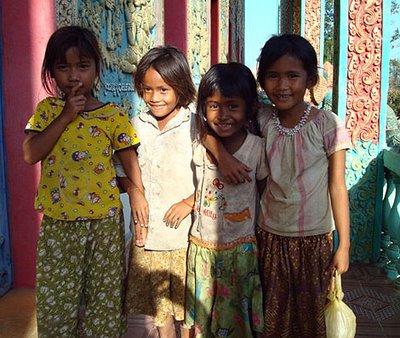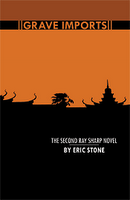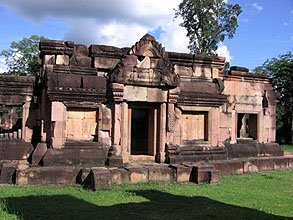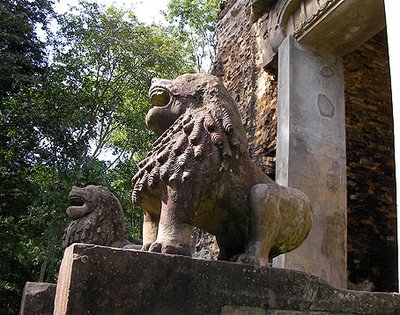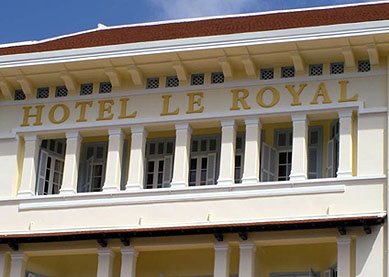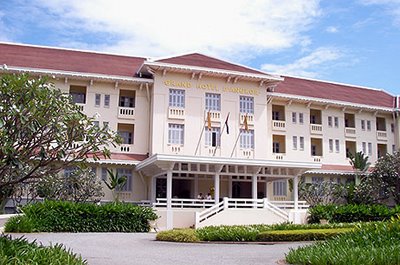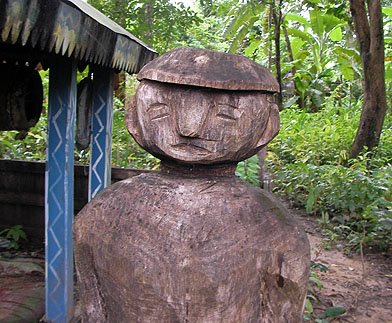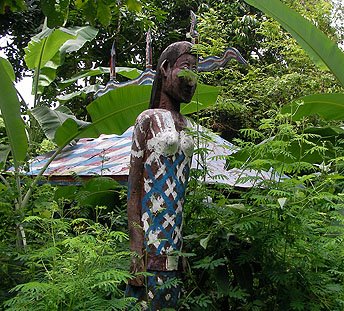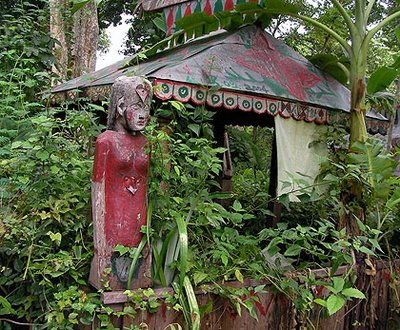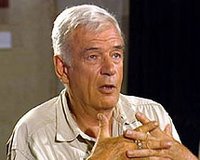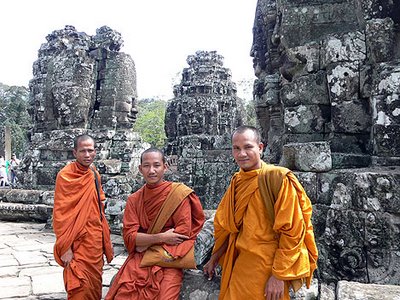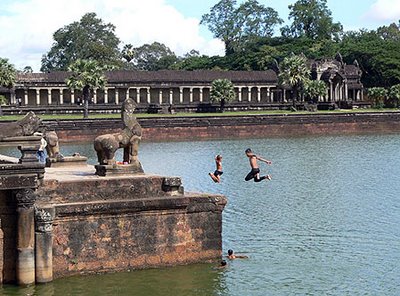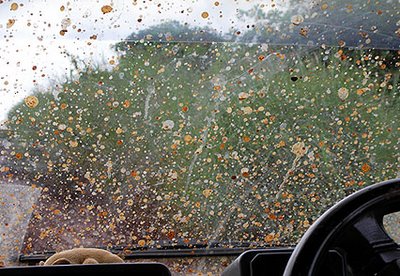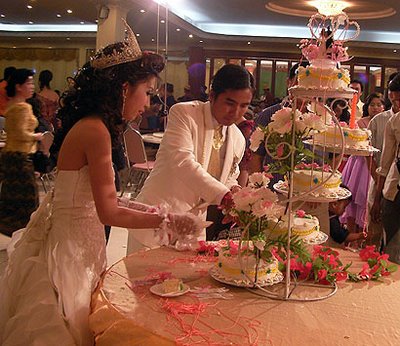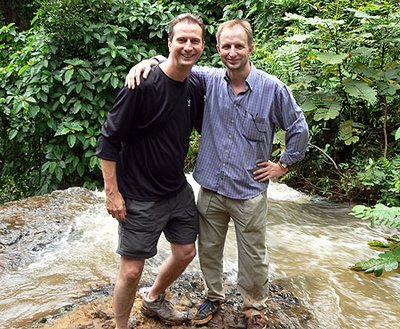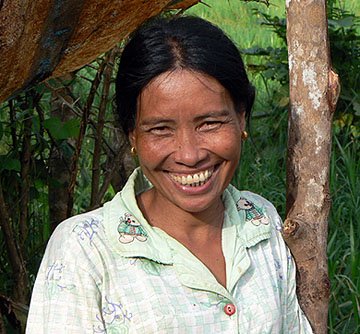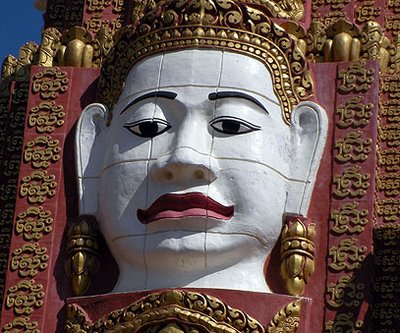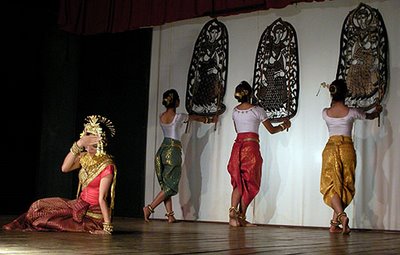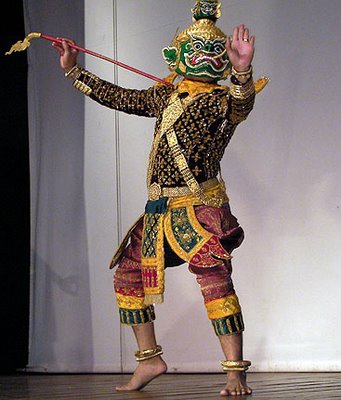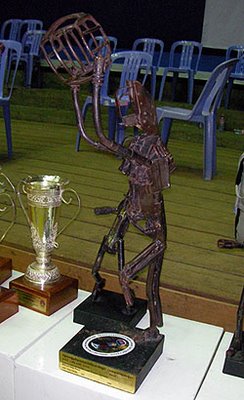The Malyasia Star newspaper highlights some of the work of the Red Cross in Cambodia.
Landing on their feet - by Lim Chia Ying
Those who survive landmines seldom come away without loss of limbs – and hope. In Cambodia, the Red Cross has set up two centres to provide prostheses, physiotherapy and a productive future for amputees.
The sight of farmers working their buffaloes against sun-soaked paddy fields sets the rhythm of yet another ordinary day for the people of Phnom Penh. In the vast tracts of grasslands, herds of cattle graze lazily as they sunbathe, while the rickety sounds of trishaws (called tuk-tuk here) and buzzing wheels of motorbikes are heard almost incessantly. I had anticipated such ubiquitous scenes throughout Cambodia, but nothing quite prepared me for some of the most heart-warming stories that I would later hear during this media trip organised by the International Committee of the Red Cross (ICRC) Regional Delegation in Kuala Lumpur.
The purpose of the trip was to raise awareness on the impact of landmines on people going about their daily activities, while commemorating the Convention on the Prohibition of Anti-Personnel Mines, also called the Ottawa Convention, signed 10 years ago on Dec 3 to 4.
Despite a bitter past scarred by a war that has crippled the country’s economy and kept much of the population below the poverty line till today, Cambodians are a resilient people. Amputees who have to depend on prostheses continue to live as they did before their accidents, with many working as farmers, similar to those we saw out our taxi’s window.
Rehab centre invaluable
Meandering along a two-lane tarred highway through chaotic traffic and dusty air, we arrived about an hour later at the Kampung Speu physical rehabilitation centre. It is one of two ICRC-supported prosthetic and orthopaedic centres in Cambodia, the other being in the province of Battambang. ICRC prosthetist-orthotist Joel Nininger, who is also project head for the ICRC Orthopedic Component Factory in Phnom Penh, said about 40% of patients at Kampung Speu are amputees, 90% of whom have limbs that were shattered by mines. “However, we are unable to determine though if it’s mines or UXO that resulted in the amputation,” said Nininger. UXO, which stands for unexploded ordnance, are undetonated remnants of war left behind by armies. “The remaining 60% of patients here suffer other disabilities, like polio. There are an estimated three million mines implanted in Cambodia and most are still there, although the number of new victims has generally decreased. “To de-mine all of them, you would probably take another 40 years or so, yet it’s still not possible to have everything cleared completely,” he added.
At the centre, ICRC staff and those from the Ministry of Social Affairs, Veterans and Youth Rehabilitation (MoSVY), which jointly runs the place, help patients fit custom-made prostheses and adjust them accordingly as they practise walking with comfort. New fittings are also made for those who need them, and casts are moulded based on indicated size markings. “We advise our patients to come back to us every six months so we can assess their condition and comfort level with their current prostheses,” said Nininger. “Kampong Speu is one of the poorest regions in Cambodia, which is why we do many outreach programmes for poor peasants who find it hard to come to us. “Disabled people can be very shy, especially the women, as they feel embarrassed. So it’s good to have field teams attending to patients at home. “Outreach programmes are also important for us to keep in touch with the amputees for follow-up support,” said Nininger.
The centre has been in existence since 1991, but ICRC only took over management from the American Red Cross in 2005. It houses dormitories as patients are required to spend between three and 20 days there for their fittings,workshops for the cast making, an outdoor play area, and a training ground for the patients to practise balancing and walking. Components like knees, ankle units, alignment systems, hands, elbow joints, and crutches, are manufactured at the orthopaedic component factory in Phnom Penh. Nininger said the components, prostheses and services like physiotherapy for patients are all provided free. “Cambodia is already a poor country, and when people unwittingly step on a landmine, they require surgery and physical rehabilitation which translate into costs. Assisting victims with free physical rehabilitation is one of the ICRC’s continuous humanitarian efforts to help reduce suffering of civilians,” he said.
The Kampong Speu centre has so far provided prostheses to about 9,450 patients registered with them since 1992. Nine other similar physical rehabilitation centres are spread over the country in different provinces. They are run by several non-governmental organisations, which receive all prostheses for free from the ICRC Phnom Penh factory. Among the amputees at Kampung Speu is an employee who now works at the centre assembling the different prostheses parts. Keo Thon, who is an ex-soldier for the Cambodian People’s Party, recalled how he stepped on a mine in 1988 when battling the Khmer Rouge army and had to undergo five surgeries to remove the shrapnel embedded under his skin. “I had psychological problems and wanted to commit suicide when I found out that my leg had to be cut off,” said Keo. But he is feeling alive again after getting a job at the centre where he has been working since 1997.
“I receive US$16 from the government as an ex-civil servant and US$144 as my salary here. I have come to realise that there are a lot of people experiencing more difficulties than me, so I’m happy enough to have a job to feed my family, and help my fellow people who are suffering.
“Wearing a prosthesis has made me feel normal and strong again,” said the 31-year-old. Nininger said mines were more heavily used after the Khmer Rouge reign during the Vietnamese and Khmer Rouge war. “About 500 mine accidents on average a year were recorded as of last year. The crop season is bad in Cambodia and people need to find new forest land to supplement their income, especially in rural areas outside town, which leads to increased mine risk. Mine accidents also happen when people manipulate and dismantle the metal, especially since the scrap metal business is booming,” Nininger explains. He notes that there is growing fatigue among donors in the issue of landmines.
Yet what people do not understand, he said, is that prostheses are needed for life, because these disabilities are for life. “Generally, people need about 10 to 20 prostheses in their lifetime. It is important for people to have the continuity of prostheses once they have ‘expired’, because without continuous transition, memories will be redirected back to the time when they stepped on the mine. “If I could sum up what prostheses mean to the disabled, it would be that it gives them back their anatomy. “You are giving back to them their leg, the capacity to walk and move around again, to live their life and be reintegrated back into society,” Nininger concluded.
 This is one of the many serene images of Buddha to be found alongside exquisite wood carvings and more that decorate the rooms at Hanuman's head office in Phnom Penh. Having our own antiques and fine arts shops here in the capital and in Siem Reap certainly has its advantages.
This is one of the many serene images of Buddha to be found alongside exquisite wood carvings and more that decorate the rooms at Hanuman's head office in Phnom Penh. Having our own antiques and fine arts shops here in the capital and in Siem Reap certainly has its advantages.






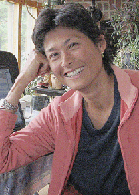
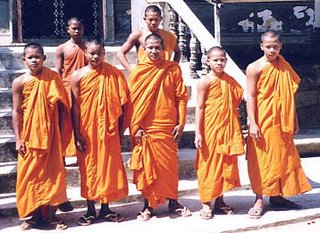
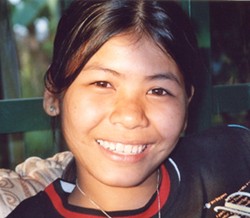
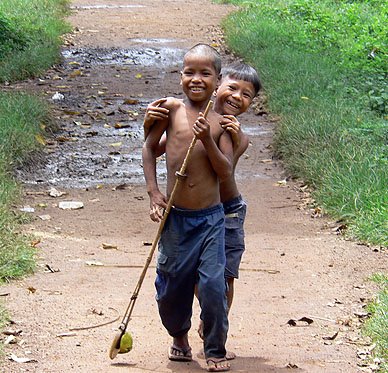
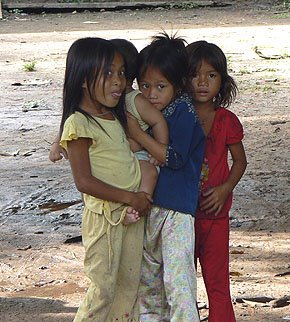


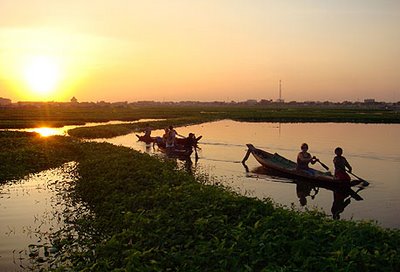








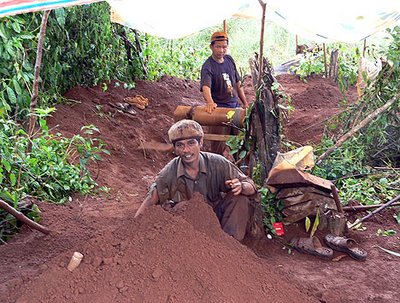

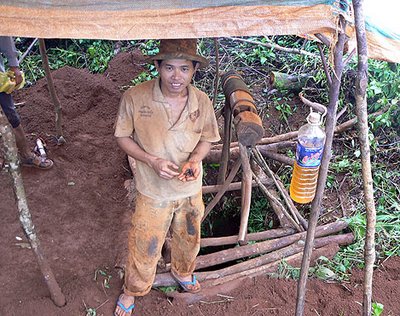

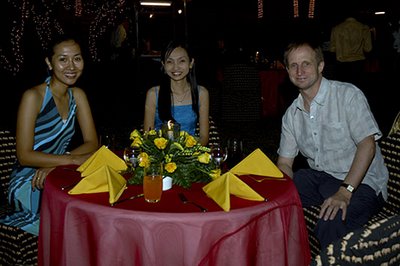

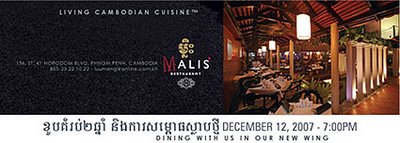
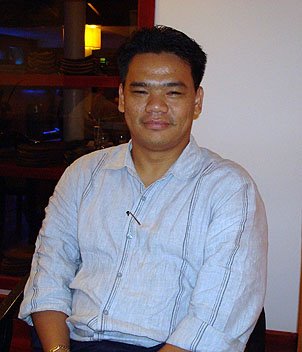


 Save the Otter
Save the Otter
